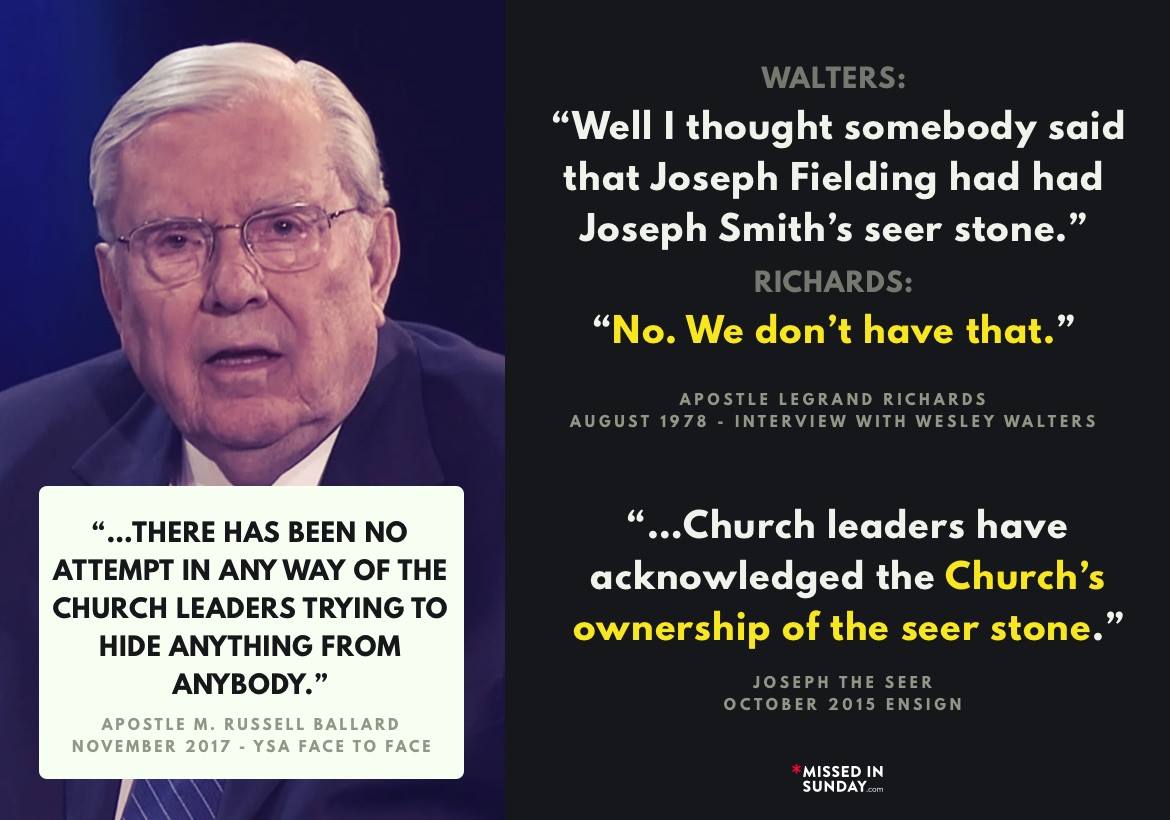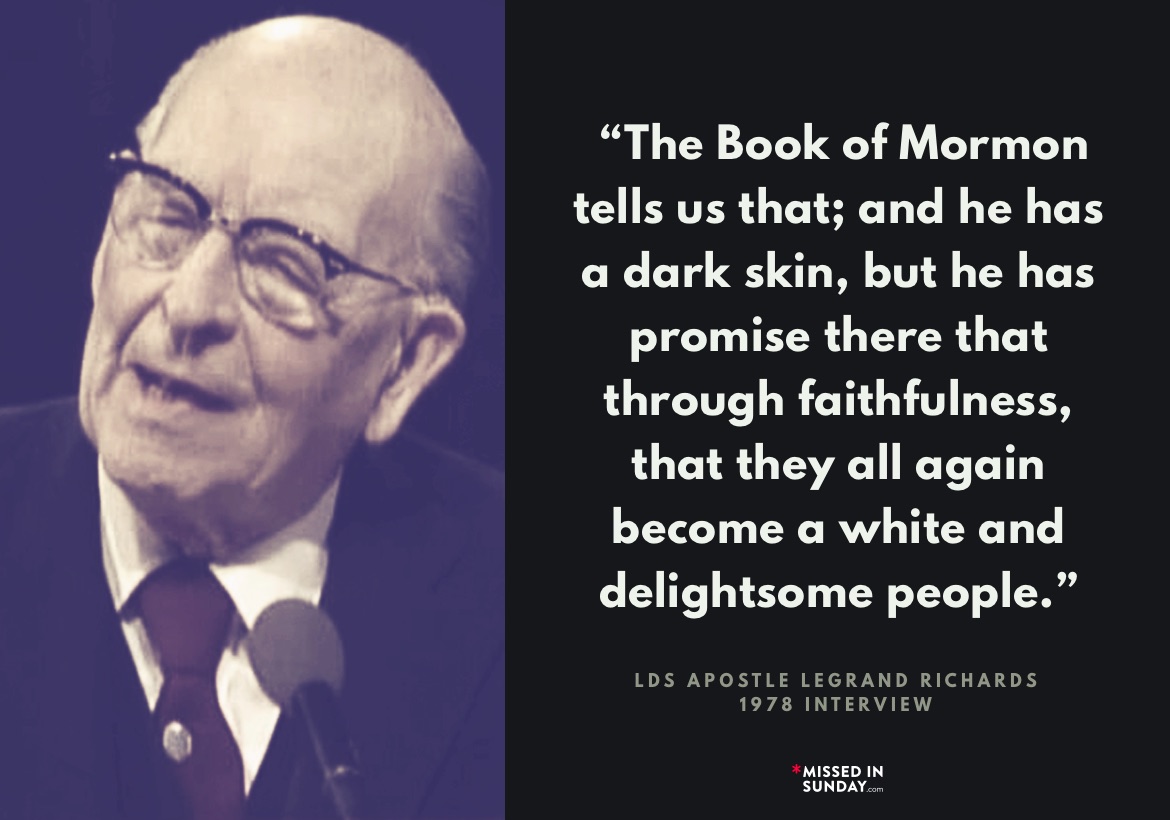Excerpt from a 2017 YSA Face to Face with Russell Ballard and Dallin Oaks:1
MALE HOST:
“…we have a lot of questions in the YSA about their friends dealing with doubts. A question from Utah asks what advice/guidance would you give for answering tough questions about church history when we are asked about them by someone who is struggling with their faith?”OAKS:
“I think the first thing is to distinguish between questions and doubts. Some people merge those as if they were the same. A question asked with a sincere desire to increase one’s knowledge and understanding is the way to increase knowledge. We encourage questions. On the other hand, a doubt is an ambiguous word. Sometimes a doubt is a synonym for a question—you just want to know the truth about something. One dictionary definition of doubt is “accompanied by distrust, a rejection of something.” That’s the kind of thing that the scriptures have condemned. The savior, for instance, said “oh, thou of little faith wherefore didst thou doubt?” He said that to his apostles when they were in the midst of the storm. And, “doubt not but be believing,” comes out of Moroni, chapter 9. And “look unto me in every thought, doubt not, fear not,” that’s Doctrine and Covenants section 6.
So, doubt is a confusing word. In some aspects we don’t encourage doubt and the scriptures condemn it. On the other hand, questions—sincere desire to know that aren’t accompanied by a presumption of rejection—are something that we wish to encourage.”BALLARD:
“And some are saying that the Church has been hiding the fact that there’s more than one version of the first vision, which is just not true. The facts are we don’t study; we don’t go back and search what has been said on the subject. For example, Dr. James B. Allen of BYU, in 1970 he produced an article for the church magazines explaining all about the different versions of the first vision.”OAKS: “How long ago was that article?”
BALLARD: “1970, that was back in 1970.”
OAKS: “We’ve been hiding that for a long time…”
[Audience laughter] [Oaks laughter]BALLARD continues:
“It’s this idea that the Church is hiding something, which we would have to say as two apostles that have covered the world and know the history of the Church and know the integrity of the First Presidency and the Quorum of the Twelve from the beginning of time. There has been no attempt on the part, in any way, of the Church leaders trying to hide anything from anybody. Now we’ve had the Joseph smith papers. We didn’t have those where they are in our hands now. And so we’re learning more about the Prophet Joseph. It’s wonderful we are. There’s volumes of it. There’s so much in those books now on my book shelf. Maybe you’ve read them all [gestures toward Oaks], but I haven’t got there. I’m a slow reader. So, just trust us wherever you are in the world, and you share this message with anyone else who raises the question about the Church not being transparent. We’re as transparent as we know how to be in telling the truth. We have to do that. That’s the Lord’s way.”
Excerpt from a 1978 interview with Apostle Legrand Richards: 2
WALTERS: “Well I thought somebody said that Joseph Fielding had had Joseph Smith’s seer stone.”
RICHARDS:”No. We don’t have that.“
WALTERS:”You don’t have that?”
RICHARDS:”No.”
WALTERS:”Oh.”
RICHARDS::”We have got some of the early writings of the Prophet Joseph and things of that kind, and testimony of when Joseph Smith performed a plural marriage for them, but – things of that kind in the Historian’s office. But we have [unintelligible] church.”
VLACHOS:”Is the seer stone in the historical department?”
RICHARDS: “We don’t have a seer stone. That went back with the plates when [unintelligible]”
WALTERS:”Oh! Okay, I hadn’t heard that. I see. I thought that somebody said that it was still out there somewhere.”
VLACHOS:”Do you know what it looked like?”
RICHARDS:”What?”
VLACHOS:”Do you know what the stone looked like?”
RICHARDS:”No. I’ve never seen it. And I don’t think there is any living man who has seen it.”
Excerpt from the October 2015 Ensign, Joseph the Seer: 3
“After Brigham Young died, one of his wives, Zina D. H. Young, who later became the third Relief Society general president, obtained a chocolate-colored seer stone from his estate that matched descriptions of the stone Joseph used to translate the Book of Mormon, and donated it to the Church. Since that time, subsequent Church leaders have acknowledged the Church’s ownership of the seer stone.”
See also:
Church as transparent as it knows how to be – wasmormon.org
Joseph Smith and “The” “First” “Vision” – wasmormon.org
References
| 1 | Apostle M. Russell Ballard, November 2017, YSA Face to Face – https://www.lds.org/broadcasts/face-to-face/oaks-ballard?cid=HP_SU_19-11-2017_dPFD_fBCAST_xLIDyL1-B_&lang=eng |
|---|---|
| 2 | Apostle Legrand Richards, August 1978, Interview with Wesley Walters – http://thoughtsonthingsandstuff.com/the-legrand-richards-interview/ |
| 3 | Joseph the Seer, October 2015 Ensign – https://www.lds.org/ensign/2015/10/joseph-the-seer?lang=eng |


